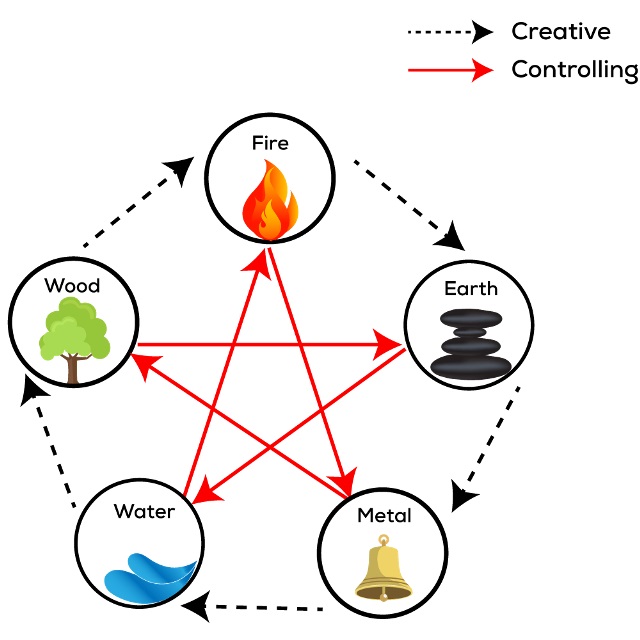Because I work at home, I have more access to view and appreciate the beauty of nature.
And this is important to me.
Why? Because watching the birds at the feeder or noticing the shadows as the sun traces its arc across the sky outside my window helps me with a brief respite from my work and adds to my creativity. Even Einstein credits nature for ideas: “Look deep into nature, and then you will understand everything better.”
I feel it is important to have a connection to nature in our crazy, chaotic lives. Nature has proven to slow our heart rates, release serotonin (which stimulates the relaxation response), and it provides us with endless creativity and inspiration. And who doesn’t want that?
Feng shui, also known as the art of placement, has its roots in Chinese philosophy developed over 4,000 years ago. Three of the foundational concepts of its philosophy are found in both feng shui and traditional Chinese medicine (acupuncture and herbs): the concept of chi (loosely translated to life force energy), the complementary opposites of yin and yang, and the five elements. These elements are found in the universe: wood, fire, earth, metal, and water.
Actually, the elements are physical as well as symbolic and are known as the “five transformations of energy.” Each element represents a different phase of energy and the five element cycles show how these phases transform from one to the other.
Working with the Seasons
One of the best ways to illustrate their energy is with the seasons:
>> Wood represents spring and uprising energy, such as plants pushing through the soil.
>> Fire represents summer and ascending energy, such as flames reaching to the heavens.
>> Earth represents early fall with stabilizing, grounding energy.
>> Metal represents late fall with contracting energy, such as when trees lose their leaves to conserve.
>> Water represents winter and descending energy, such as falling rain.
The creative cycle works like this (follow the black dotted line):

>> Wood feeds fire.
>> Fire creates ash (which is soil).
>> Earth produces metal (minerals).
>> Metal nourishes water.
>> Water feeds wood (plants).
To counter balance and keep harmony in the natural world, there is also the controlling cycle (follow the red line):
>> Fire melts metal.
>> Metal chops wood.
>> Wood (plants) breaks through earth.
>> Earth dams up water.
>> Water douses fire.
Every element has an element that “creates” it and an element that “controls” it. Therefore, balance and harmony are maintained in the natural world.
The elements make up everything in creation, including us! When we connect to these elements, we are bringing ourselves back into balance—which makes us feel more empowered and amazing!
Using the Elements to Promote Harmony
Wood symbolizes plants, flowers, and trees, and of course, the color green. We can place a plant or two on our desk or nearby, which also has a bonus of improving the air quality in our offices. If we are lucky enough to have a view of trees or plants, this will really be a bonus during the work day.
Wood is about taking initiative on new projects, being competitive (which can make others rise to the occasion), and courageousness. Wood sees clever solutions to obstacles. Wood loves to lead and really makes this happen.
Fire is represented by natural sunlight and man-made lighting, as well as, of course, real fire. It is the boldness of colors like red and deep orange. If we have a window to the outside world from our desk, it will enhance our feeling of well-being. Noticing the subtle changes of sunlight throughout the day as the sun moves across the sky is a wonderful way that we can connect with fire. No window? We can place a lamp on our desk with a sunlight bulb installed.
Fire is extroverted and loves to be with others, sometimes on a large scale. It’s about laughter and joy, as well as heart-centered connection. Fire inspires others to gather and accomplish things together. Fire has vision and clarity. Fire can light the way for others.
Earth is the ground we walk upon. It includes soil and other geographic features, such as mountains, valleys, and open spaces. The colors of earth are the colors of soil, from sandy beige to peat moss brown, as well as orangey clays, and yellow. We can bring earth into our offices with a bowl of rocks, a crystal, a piece of pottery, or a terra cotta pot.
Earth is the archetype of the earth mother. It is about community and teamwork. The quality of earth stays in the background—when working on projects, it equals being a valued, reliable, and responsible team player. Earth gets things done with great follow-through.
Metal represents the metals and minerals from within the earth. It is the colors of metal: white, gray, gold, and silver. Metal also represents the open sky and air. If we have the opportunity to step out during our work day, we can notice the sky and breathe the fresh air, bringing the essence of metal into our bodies. We can also place a metal object on our desk as a reminder of metal.
Metal is about structure and organization. Metal is authoritative and others look to them for leadership. It is associated with precision and refinement. The metal quality will always check and re-check their work, making sure there are no errors. Metal has great confidence and strength.
And finally, water is symbolized by any body of water, natural or man-made. It’s the colors of black and blue. If we are lucky, we might have a view of water from our office. If not, a water fountain or aquarium will work, too. Even a photograph or artwork depicting a water scene is nice in an office space.
Water represents the energy of going inside and being still. Qualities of water including being reflective and imaginative. Water often contributes to new insights and wonderfully creative ideas. Water can be playful, and it sometimes prefers to work solo.
When we tap into these amazing qualities of nature, we are able to be in harmony in our work place and are more inspired and balanced.
~
Author: Maureen K. Calamia
Image: Author’s Own; Pexels
Editor: Catherine Monkman
Copy Editor: Danielle Beutell
Social Editor: Yoli Ramazzina

 Share on bsky
Share on bsky







Read 0 comments and reply